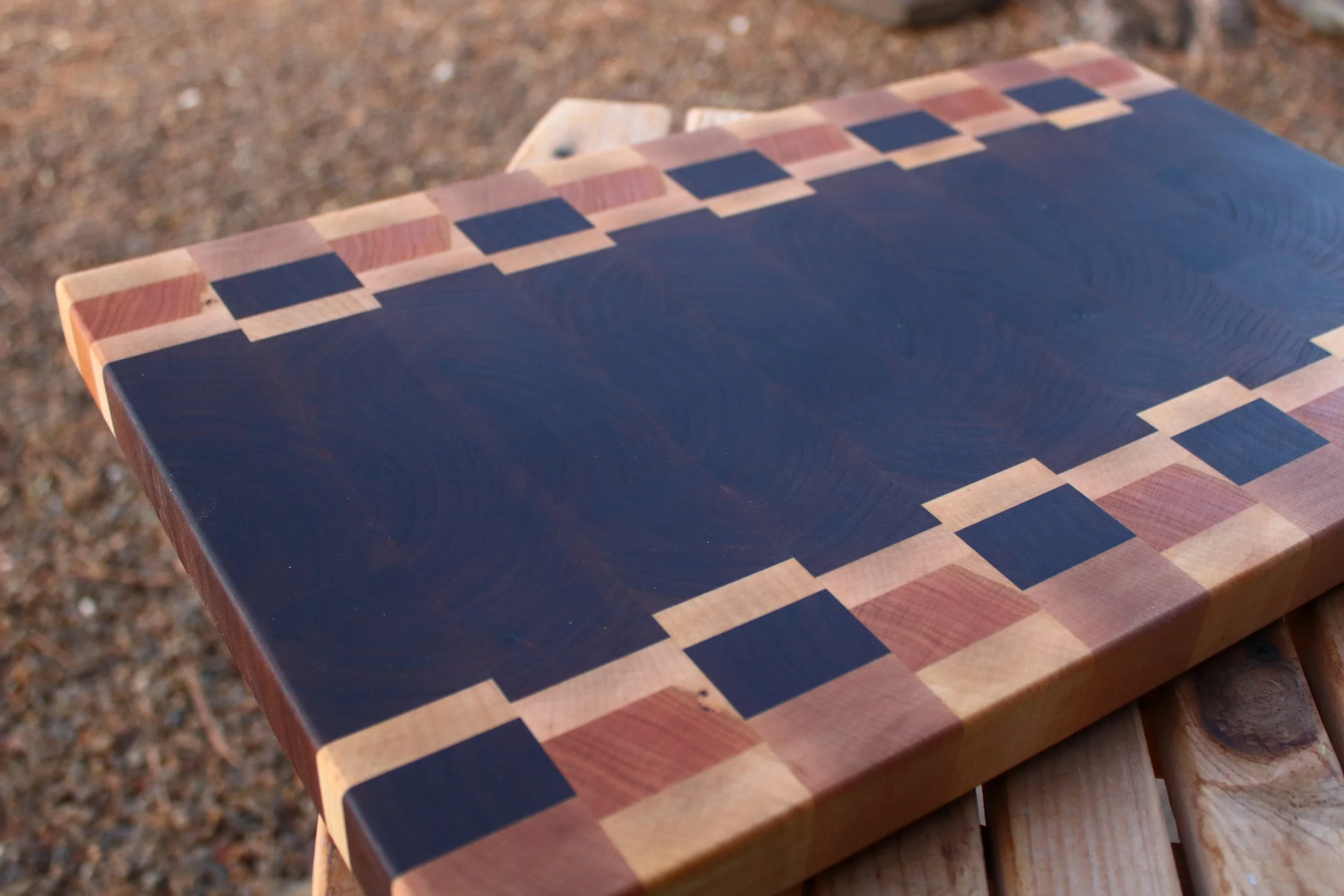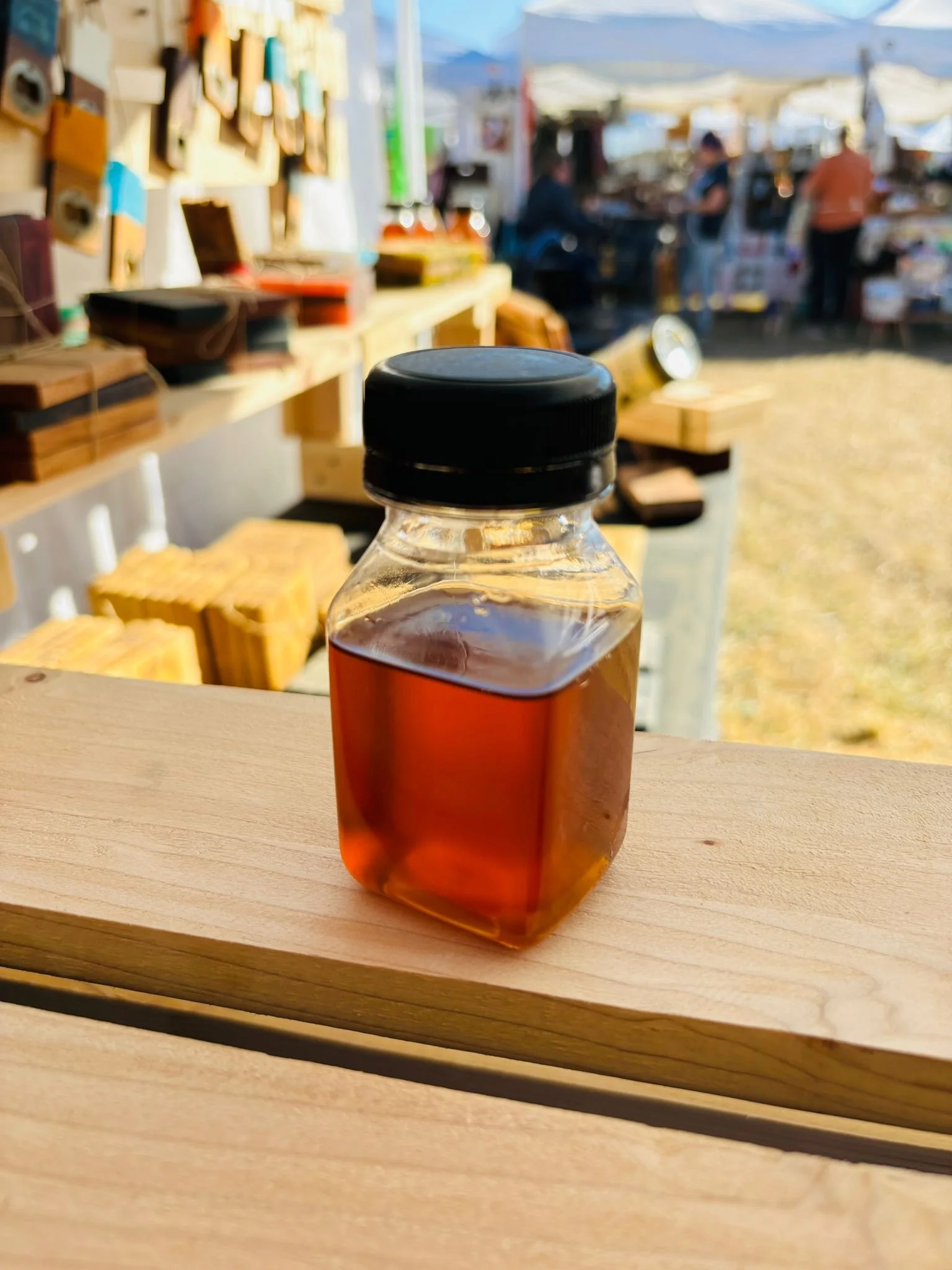
For Those who Cook
How to choose and maintain a cutting board from Valley View Woodcraft
Getting to know the types of boards
With so many types and styles choosing a cutting board can be daunting, so this page is here to help! Lets first get a better understanding of the different types of boards available.
Edge grain: the “edge” of a board. Here, the grain and fibers still run the length of the board, but are much closer together, providing better mark resistance to that of a face grain board. Edge grain allows for a greater variety of designs when compared to face grain boards.
End grain: the end of a board where the “rings” are visible. Here, the grain runs into the board and is exposed on the top. End grain may be thought of as a bundle of straws looked at through the top. When cutting along end grain, the grains “move around” and are harder to sever than the grain in face and edge boards due to the grain alignment. This makes end grain boards the most superior board in regards to cut and scratch resistance.
Choosing the right cutting board for you
Face Grain: If you do not use a cutting board very often, but still value the handcrafted look and natural material, then a face grain board may be right for you. They are elegant in their simplicity and their design highlights the natural beauty present in the grain pattern of the wood. These also come in smaller sizes designed to easily fit in a drawer when not in use.Edge Grain: For the weekend kitchen warrior (or those that cook a few days a week), edge grain boards are fun, offering many designs, and medium scratch resistance over time. Under average use, your board should look good for months to come. Being edge grain, they are also very easy to service/sand yourself if you decide to bring some new life back into your board after it shows a little wear. End Grain: for the daily (or twice daily!) cooks out there. These boards take months to show knife marks and can stand up to time and heavy use. Where edge and face grain would show extensive wear under such use, end grain cutting boards stand tall. Additionally, due to the nature of end grain, they are also the easiest board on your knives, having the lowest blunting effect of the three boards, allowing your knives to hold their edge longer.Maintaining your board
So you have chosen your board. What next? Much like the age old cast iron skillet that needs seasoning, your cutting board needs some seasoning as well, albeit a different kind.
Valley View Woodcraft boards are finished with a food safe Tung oil made from the seeds of the Tung tree. This is a drying oil, meaning that the oil hardens into place in the wood fibers. Mineral oil, while food safe, does not dry, and so during use and wash, will naturally be pulled out of the board. This requires much more frequent maintenance to the board.
Tung oil, on the other hand, dries, and so is much harder to pull out of the wood. This means you can go months, if not a year or more, between maintenance of your board.
That said, there are still a few rules to follow when caring for your cutting board.
Handwash only, do not soak. Dishwashers get too hot for the wood and will cause the wood to crack and split, permanently damaging your board. Often times, a little water and a rag is all you need, but light soap and the soft side of a sponge make quick work of the tougher messes.
Dry on its side unless your board comes with feet. Even still, its good practice to wipe it down.
When it comes time to perform maintenance on your board, you can do it yourself, or for a small fee, bring it back to us and we can take care of it for you! Going the DIY route, you will want to sand the top some to remove the marks (if you want). You will want to start with 80 grit, working your way up to at least 220 grit. Then, apply some 100% Tung oil (100% is importance because some manufacturers include quick drying agents that are not food safe!). Need some oil? Contact us for a touchup bottle!



